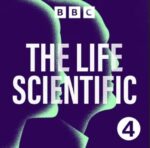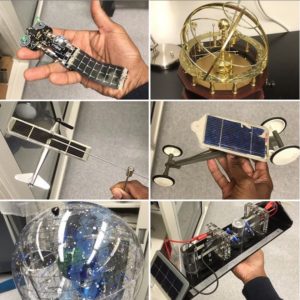 I’m late to the party. Yes, I use the word party, because the outpouring of commentary noting the passing of Stan Lee has been, rightly, marked with a sense of celebration of his contributions to our culture. Celebration of a life full of activity. In the spirit of a few of the “what were you doing when you heard…” stories I’ve heard, involving nice coincidences and ironies, I’ve got one of my own. I’m not exactly sure when I heard the announcement on Monday, but I noticed today that it was also on Monday that I got an email giving me some news* about the piece I wrote about the Black Panther earlier this year for the publication The Conversation. The piece is about the (then) pending big splash the movie about the character (co-created by Stan Lee in the 60s) was about to make in the larger culture, the reasons for that, and why it was also a tremendous opportunity for science. For science? Yes, because, as I said there:
I’m late to the party. Yes, I use the word party, because the outpouring of commentary noting the passing of Stan Lee has been, rightly, marked with a sense of celebration of his contributions to our culture. Celebration of a life full of activity. In the spirit of a few of the “what were you doing when you heard…” stories I’ve heard, involving nice coincidences and ironies, I’ve got one of my own. I’m not exactly sure when I heard the announcement on Monday, but I noticed today that it was also on Monday that I got an email giving me some news* about the piece I wrote about the Black Panther earlier this year for the publication The Conversation. The piece is about the (then) pending big splash the movie about the character (co-created by Stan Lee in the 60s) was about to make in the larger culture, the reasons for that, and why it was also a tremendous opportunity for science. For science? Yes, because, as I said there:
Vast audiences will see black heroes of both genders using their scientific ability to solve problems and make their way in the world, at an unrivaled level.
and
Improving science education for all is a core endeavor in a nation’s competitiveness and overall health, but outcomes are limited if people aren’t inspired to take an interest in science in the first place. There simply are not enough images of black scientists – male or female – in our media and entertainment to help inspire. Many people from underrepresented groups end up genuinely believing that scientific investigation is not a career path open to them.
Moreover, many people still see the dedication and study needed to excel in science as “nerdy.” A cultural injection of Black Panther heroics could help continue to erode the crumbling tropes that science is only for white men or reserved for people with a special “science gene.”
And here we are many months later, and I was delighted to see that people did get a massive dose of science inspiration from T’Challa and his sister Shuri, and the whole of the Wakanda nation, not just in Black Panther, but also in the Avengers: Infinity War movie a short while after.
But my larger point here is that so much of this goes back to Stan Lee’s work with collaborators in not just making “relatable” superheroes, as you’ve heard said so many times — showing their flawed human side so much more than the dominant superhero trope (represented by Superman, Wonder Woman, Batman, etc.,) allowed for at the time — but making science and scientists be at the forefront of much of it. So many of the characters either were scientists (Banner (Hulk), Richards (Mr.Fantastic), T’Challa (BlackPanther), Pym (Ant Man), Stark (Ironman), etc) or used science actively to solve problems (e.g. Parker/Spiderman).
This was hugely influential on young minds, I have no doubt. This is not a small number of […] Click to continue reading this post →
 After doing a night bottle feed of our youngest in the wee hours of the morning some nights earlier this week, in order to help me get back to sleep I decided to turn on BBC Sounds to find a programme to listen to… and lo and behold, look what had just aired live! The programme that I’d recorded at Broadcasting House a few weeks ago in London.
After doing a night bottle feed of our youngest in the wee hours of the morning some nights earlier this week, in order to help me get back to sleep I decided to turn on BBC Sounds to find a programme to listen to… and lo and behold, look what had just aired live! The programme that I’d recorded at Broadcasting House a few weeks ago in London.










